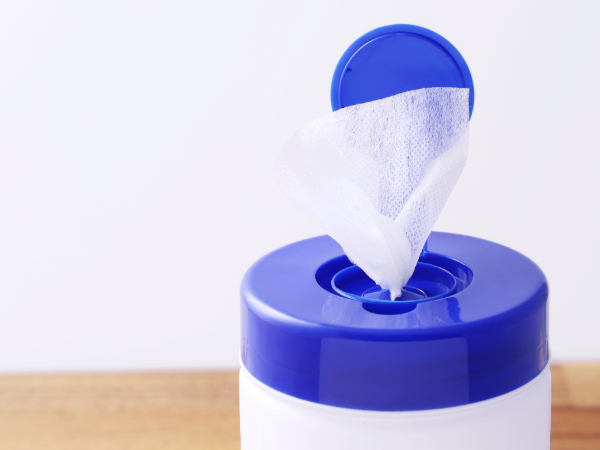
Since COVID-19, many of us are more conscious of germs. That’s led us to sanitize surfaces in our homes and as we travel. But did you know all those wipes are actually adding more plastic to our waste stream?
Whether you are disinfecting the area around you on an airplane or your countertops and doorknobs at home, cleaning a baby’s bottom, or removing makeup, the cleansing wipes you use are made of a combination of materials, including polyester, polypropylene, cotton, wood pulp, and rayon, combined with cleansing or moisturizing agents. Polyester and polypropylene are types of plastic, so it is always a bad idea to flush wipes down the toilet, even if the packaging indicates they are flushable.
An online article from Good Housekeeping reported on a 2019 BBC series, War on Plastic with Hugh and Anita. This BBC report explained that wet wipes are just one of the hidden sources of plastic we unknowingly use and then inadvertently contribute more microplastic into our waterways and oceans.
Like many single-use plastics, cleansing wipes are convenient, but they aren’t recyclable. Always place used wipes into the trash can — never on the ground, and never in the recycling bin. Instead of using single-use, store-bought wipes, save money by using a spray disinfectant or cleanser along with reusable, washable cloths or paper towels, which are more eco-friendly choices. For personal hygiene-wipe and baby-wipe alternatives, use a spray bottle of water to spritz toilet paper or a cloth before wiping. Wash all reusable cloths in hot water with detergent and dry thoroughly to kill germs. For travel, you can make your own carry-along, disposable wipes with paper towels and at least 70% rubbing alcohol. You can search for DIY instructions for sanitizing wipes on the internet. Here’s just one DIY example from HGTV.
Credit: akiyoko | iStock | Getty Images Plus
